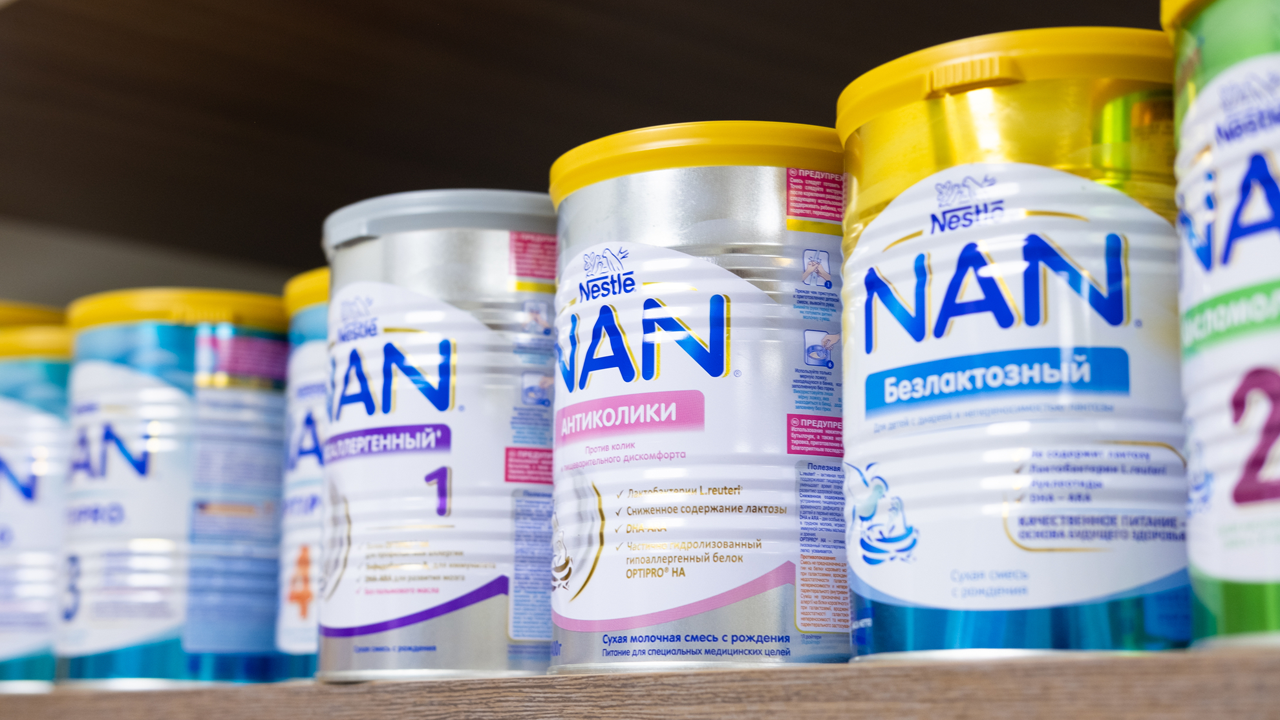
A huge amount of ingredients for the production of medical nutrition is imported to Russia from other countries. 100% amino acids, vitamins, minerals and many other things that meet the standards of ingredients for medical nutrition are imported from abroad. Domestic enterprises for the production of medical nutrition do not have the opportunity to switch to autonomous production of products, since there are no technologies for obtaining many specific monocomponents. One of the bottlenecks for the production of clinical nutrition, including for children, is the availability of demineralized whey DS-90. The situation is also bad with the production of high-quality whey protein hydrolysates.
Whey demineralization is performed by capillary electrodialysis, which allows separating minerals from whey. During electrodialysis, such macro- and microelements as potassium, sodium, calcium, magnesium, and phosphorus are removed from the serum. Whey desalting leads to the loss of valuable micro- and macroelements, which can potentially be used as a food additive in the enrichment of specialized products.
For the production of whey protein hydrolyzate, it is first necessary to isolate the protein fraction from the feedstock (whey). This process is achieved by ultrafiltration on complex expensive equipment worth 1.5 million euros, without taking into account the cost of customs clearance. The capacity of such installations starts from 100 tons of liquid whey per day, which means that the equipment will pay off only if such an amount of raw materials is available at the enterprise. On the territory of Russia, a few enterprises have ultrafiltration units, for example, the Molvest agricultural holding at the Kalacheevsky cheese factory in the Voronezh region with a capacity of 600 tons of raw materials per day and at the Ichalki plant in Mordovia with a capacity of 400 tons of raw materials per day.
A further technological process involves the isolation of pure amino acids from protein by chemical hydrolysis, and this is where difficulties arise. Europe, USA, China have already mastered this technology quite well. Domestic production using this technology was lost along with the collapse of the USSR, and the West immediately took up the initiative to export its own products to the territory of the post-Soviet space. Russia has been purchasing similar components from foreign partners for many years, although the country has more than enough raw materials to develop its own production. The organization of deep processing of whey requires significant capital and financial investments and can only be carried out at large enterprises. The problem lies in the lack of equipment and it can be solved only with the help of the development of state-owned enterprises for the production of specialized food products.
Let me give you some statistics on the medical nutrition market.
According to Grand View Research, from 2014 to 2022, the global market volume of enteral mixtures alone grew 1.5 times and amounted to $7 billion. Moreover, monomeric mixtures (which include separate purified components) account for almost half of this amount.
The volume of tender purchases of all categories of medical nutrition in Russia reached 2.9 billion rubles by 2022, which is 17% more than in 2021. The largest share in sales of specialized medical nutrition is occupied by products for diet therapy for allergies to cow’s milk proteins. They are followed by tube feeding products and sips (drink forms for children and adults).
According to 2022 statistics, the only domestic medical nutrition company occupies 15% of the entire medical nutrition market, including retail. Although the share of medical nutrition of domestic origin is small, it is represented by a wide range, covering most of the diseases that require specialized products. In the coming years, the medical nutrition market in Russia is expected to grow as a result of an increase in the list of diseases that fall under neonatal screening (previously there were only five, now there are 36).
In general, the situation with providing those in need of medical nutrition is now difficult. I often hear that patients in rehabilitation buy sports products as a replacement for medical nutrition: proteins, isolates, amino acids.
However, medical nutrition should never be replaced by sports nutrition. The main reason is the lack of an evidence base, different requirements for the development, production and control of products. Products for athletes may contain elements that will have a detrimental effect on the condition of patients up to death. Specialized nutrition products are developed by scientists together with the involvement of the medical community and patients. In the production of specialized nutrition products, the needs of patients with various diseases are taken into account. Also, all specialized food products undergo a rigorous state registration procedure with clinical and laboratory tests.
Patients in need of medical nutrition should be provided at the expense of public funds. According to the current legislation, patients can count on receiving specialized nutrition only in a hospital setting. What happens after the transition of the patient to outpatient treatment? This question, rather, to the Ministry of Health.
Since today medical nutrition is included in the category of food products, the initiative for the production and responsibility for their quality falls on the shoulders of the food industry. It is in our power to revive Soviet technologies and, on their basis, develop innovative modern cost-effective methods for obtaining components for clinical nutrition. Instead of draining whey down the drain or feeding it to pigs, it can be made into a health food that will save the lives of hundreds of patients. I believe that the deep processing of raw materials and the use of by-products from the main production are the key to food independence from imports.
The author is the President of the Association for the Development of the Food Industry “Eurasian Council of the Industry of Specialized Food Products”.
